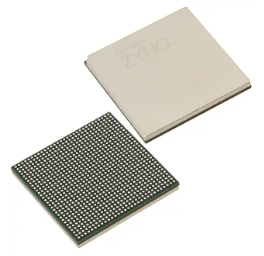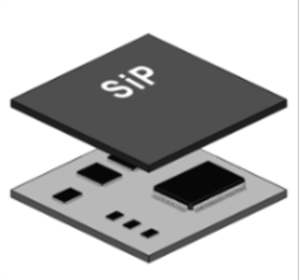
Making the Right Integration Choice: SoC or SiP?
Global electronic component supplier AMPHEO PTY LTD: Rich inventory for one-stop shopping. Inquire easily, and receive fast, customized solutions and quotes.
What is SoC?
A system on a chip (SoC) is an integrated circuit that combines the majority or all of the components of a computer or other electronic system. These components almost always include an on-chip central processing unit (CPU), memory interfaces, input/output devices, input/output interfaces, and secondary storage interfaces, and are frequently combined with other components such as radio modems and a graphics processing unit (GPU) - all on a single substrate or microchip. SoCs may include digital, analogue, mixed-signal, and frequently radio frequency signal processing operations (or they may be regarded as distinct application processors). For more information, please read this article: System on Chips: Design, Applications and Future

Is SoC the Same as CPU?
The answer to this issue is no although both have some related terminology. On the one hand, an SoC is a chip that integrates multiple essential components and functionalities, including the CPU, system components like memory, a graphics processing unit (GPU), input/output interfaces (such as USB, HDMI, Ethernet), digital and analogue peripherals, and specialized hardware accelerators or coprocessors for specific tasks (such as image processing or encryption). On the other hand, the central processing unit (CPU) is an essential component of computing systems. It plays a critical role in processing data and carrying out instructions. Often referred to as the computer's "brain," it is responsible for managing data flow, performing mathematical and logical operations, and executing instructions. Without a CPU, a computer or electronic device would not operate correctly. Although the CPU is an essential part of an SoC that executes instructions, an SoC includes several components and subsystems integrated into a single chip to form a complete system. In addition, not all System on a Chip (SoC) devices use a CPU as their main processing unit. Depending on the specific application and performance needs, alternative processor architectures such as GPUs, DSPs (Digital Signal Processors), or specialized accelerators may be utilized instead.
The Advantage of SoC
SoC exerts great importance on modern FPGA technology due to its highlight advantage. Here are several brief advantages.
- Continuous Security Monitoring
- Comprehensive Intelligence
- API Security
- Fast and Effective Response
- Centralized Network Visibility
- Cost-Effective Cybersecurity
For more information, please read this article: System on Chip Introduction: The Ultimate Guide to SoC
What is SiP?

The Advantage of SiP
System in Package (SiP) dies represent a viable option for space-saving purposes. They allow for vertical or horizontal stacking and can leverage various technologies such as chiplets or quilt packaging. Thanks to their ability to accommodate multiple chips and passive components, SiP dies are particularly useful in situations where space is at a premium. It is worth noting, however, that SiPs operate differently from System on a Chip (SoC) integrated circuits, which integrate components based on function into a single die. In contrast, SiPs exhibit a lower degree of integration compared to SoCs and hybrid integrated circuits, as they may incorporate older or less advanced technology. Modularity and Component Integration: System-in-Package (SiP) technology is an integration solution that facilitates the seamless integration of various components or modules from multiple manufacturers into a single package. This modular approach promotes flexibility and customization options, providing product designers with the ability to choose the most suitable components for each function and simplify the replacement process when necessary. The compact nature of SiP packages makes them an ideal solution for smaller electronic devices such as smartphones and wearable technology, as they make efficient use of space. Design Flexibility and Time-to-Market: SiP provides flexibility in system design and prototyping. With SiP technology, designers have the freedom to integrate multiple components, such as processors, memory, and sensors, into a single package. This allows for faster development cycles and shorter time-to-market as it eliminates the need for separate PCBs and complex interconnects. Additionally, SiP enables rapid prototyping by simplifying the assembly process and reducing the number of external connections required. Performance Optimization and System Partitioning: SiP allows for the partitioning of a system into smaller functional blocks or modules. Each module can be optimized independently, leveraging specialized technologies and design expertise. This approach enables developers to focus on improving the performance of specific modules without affecting the overall system functionality. By optimizing each module individually, the system as a whole can achieve higher performance levels and enhanced efficiency. Additionally, system partitioning also facilitates easier maintenance and upgrades as changes can be made to individual modules without disrupting the entire system. Cost Efficiency and Supply Chain Management: SiP can provide cost advantages in several ways. By utilizing off-the-shelf components, SiP reduces upfront development costs and minimizes the need for custom chip fabrication. Additionally, SiP enables efficient use of space by integrating multiple components into a single package, reducing the overall size and complexity of the product. This not only saves on manufacturing costs but also streamlines the supply chain by simplifying procurement and inventory management processes.
What is the Difference between SoC and SiP?
| Aspects | SoC |
SiP |
| Integration Level | A System-on-Chip (SoC) is a digital system that integrates all crucial components onto a single silicon chip, including the processor core, memory, input/output interfaces, and other peripherals. The components are designed to flawlessly work together and share a common communication fabric. | The System-in-Package (SiP) technology entails the consolidation of multiple chips or components into a singular package, despite their potential dispersal across several silicon dies. These chips or components may be manufactured separately and then subsequently integrated within the package. Each chip or component may possess its unique functionalities and interfaces. |
| Design Complexity | In the development of a System on Chip (SoC), it is imperative to create a highly integrated circuit with a complex interconnect fabric. This requires meticulous attention to power management, signal integrity, and overall system performance. SoC designs commonly incorporate custom IP blocks or specialized components tailored to specific applications. | System-in-Package (SiP) designs are generally less intricate. They involve the integration of multiple chips or components as distinct entities within a single package. Each component can be designed and manufactured independently, with an emphasis on optimizing the physical layout, interconnections, and electrical characteristics during the integration process. |
| Flexibility and Customization System-on-chips | s (SoCs) are typically designed to cater to specific applications or product lines. They are highly customizable and optimized for their intended use. By integrating components onto a single chip, they enable a robust connection, reduce power consumption, and enhance performance. SoCs are commonly utilized in consumer electronics, including smartphones, tablets, and gaming consoles. | System in Package (SiP) technology is recognized for its exceptional flexibility and modularity. It allows for the combination of different chips or modules, sourced from diverse manufacturers, to create tailor-made solutions. The versatility of SiPs makes them ideal for integration in scenarios where multiple functionalities are required, such as in wireless communication modules, IoT devices, or specialized industrial applications. |
| Time-to-Market and Cost | The development of a System on Chip (SoC) typically requires significant investments in design, manufacturing, and testing. The design phase can be intricate and time-consuming, involving numerous iterations and verification procedures. SoCs are commonly associated with prolonged development cycles and elevated costs. | System-in-Package (SiP) technology presents a viable alternative to System-on-Chip (SoC) in terms of cost and speed of development. By leveraging pre-existing components and modules, SiPs can be produced faster and at a lower cost. SiPs are commonly utilized when time-to-market is of the essence or when existing components can deliver the necessary functionality efficiently. |
How to Choose between SoC and SiP?
When considering the integration of System-on-Chip (SoC) versus System-in-Package (SiP), it is crucial to carefully evaluate the specific requirements of your project. You must take into account the unique needs and constraints of your particular application to make an informed decision. By conducting a thorough analysis of your system requirements, you can determine which integration approach is best suited for your project. The followings are some factors that I thought may affect your choice. An essential aspect of system design is the assessment of complexity and interdependencies among its constituent elements. This evaluation plays a vital role in determining whether a SoC or SiP is more appropriate for the given system. SoCs are ideal for integrated systems that require efficient communication and tight integration to achieve optimal performance. On the other hand, SiPs are better suited to systems that combine different components or modules with distinct functionalities. In assessing the level of customization required, SoCs offer extensive customization options, enabling the use of specialized IP blocks and components tailored to meet specific requirements. SiPs, on the other hand, offer flexibility by combining off-the-shelf components from different manufacturers, allowing customization through module selection and integration. When deciding on a system for a project, a variety of factors must be taken into account. One of these is the time-to-market, which can be affected by the development cycle of the chosen system. SoCs, with their complex design, verification, and manufacturing processes, tend to have longer development cycles. In contrast, SiPs utilize pre-existing components and modules, which can result in a faster time-to-market. Another crucial consideration of cause is the cost. SoCs generally have higher upfront costs due to custom chip development and other expenses. In contrast, SiPs can be more cost-effective by utilizing off-the-shelf components. Performance and power efficiency are also important factors to consider. SoCs optimize performance by integrating components on a single chip, while SiPs can achieve efficient power management by combining components with varying power requirements. Finally, it is important to evaluate application-specific requirements. SoCs are frequently used in devices that necessitate optimized performance and integration, while SiPs are more suitable for applications requiring functionalities, modularity, and flexibility. By considering all of these factors, a system can be chosen that is best suited for the particular project at hand.
Conclusion
Determining whether SoC or SiP integration is the optimal solution for your project requires careful consideration of your specific requirements. By taking all the advantages and factors that I have mentioned about, I believe you can choose a suitable approach to meet your requirements.
Related Articles
- ·SoC vs SoM: What's the Difference?
- ·The Application of Embedded Electronics in the Field of Consumer Electronics
- ·The application of embedded systems in the field of automotive electronics
- ·The Rise of Chinese MCUs — 51 Series (STC, Nuvoton, WCH, Sinowealth, GD32, SOC, Corebai, On-Bright)
- ·What is the difference between SoC, FPGA, and ASIC?
- ·Understand the differences between CPU, GPU, IPU, NPU, TPU, LPU, MCU, MPU, SOC, DSP, FPGA, ASIC, GPP, and ECU
- ·What electronic components are soldered onto system on a chip boards?
- ·System on Chip vs Network on Chip: What is the difference between SoC and NoC?
- ·Microprocessor vs. Microcontroller vs. System on Chip: What are the differences among them?
- ·System on Chip Basics: A Step-by-Step Guide for Novices
